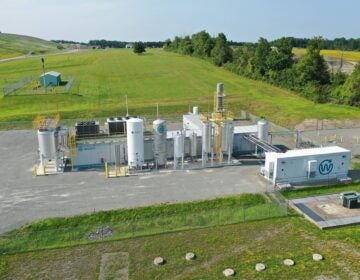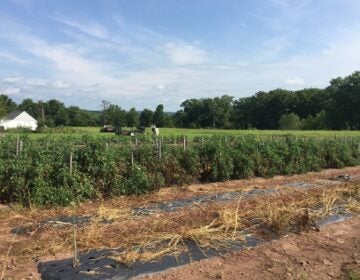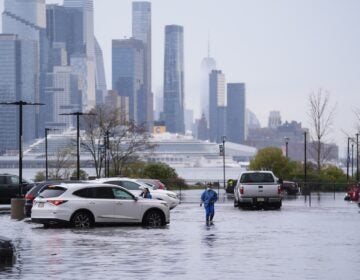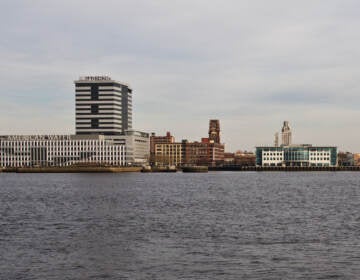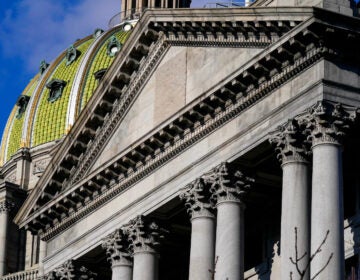Philly’s carbon emissions have dropped. Here’s what experts say should be next
The data could be clouded by impacts of the COVID-19 pandemic, such as an increase in remote work.
Listen 1:25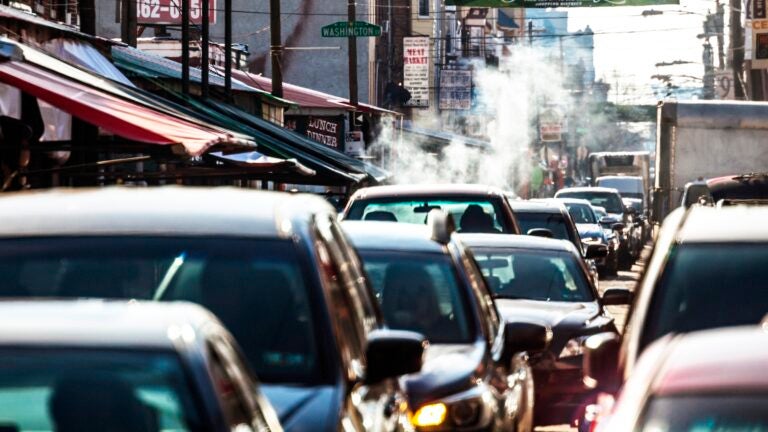
Traffic builds up on S. 9th St. in Philadelphia's Italian Market. (peeterv/iStock)
This story is part of the WHYY News Climate Desk, bringing you news and solutions for our changing region.
From the Poconos to the Jersey Shore to the mouth of the Delaware Bay, what do you want to know about climate change? What would you like us to cover? Get in touch.
Philadelphia’s climate pollution has continued to drop, according to a new analysis of the city’s planet-warming emissions.
The report, which accounts for Philly’s emissions in 2022, shows the city is on track to meet its climate goals, which include zeroing out carbon emissions by 2050, said Nidhi Krishen, deputy director for climate solutions in the city’s Office of Sustainability.
But experts say going forward, the changes that need to be made to meet that goal could be more challenging for the city.
“You’ve achieved most of the low-hanging fruit at this point,” said Jesse Keenan, director of Tulane University’s Center on Climate Change and Urbanism. “To get further decarbonization is going to be really tough.”
The inventory is Philly’s second citywide greenhouse gas assessment. A previous inventory of emissions in 2019 also showed a decrease from the baseline in 2006.
“We’re still showing a continued steady downward trend,” Krishen said.
A cleaner grid, more efficient buildings and the closure of the PES refinery
Greenhouse gas emissions across all sectors of Philly’s economy dropped 31% between 2006 and 2022, according to the analysis, with a third of these reductions happening since the city’s last inventory in 2019.
In contrast, greenhouse gas emissions across the U.S. fell just around 15% between 2006 and 2022.
“[Philly] is more ambitious and has made more progress than the U.S. as a whole,” said Noah Kittner, a professor who studies energy systems at the University of North Carolina at Chapel Hill. “From that perspective, it’s quite encouraging.”
Like in 2019, many of the changes that drove Philly’s emissions reductions in 2022 were outside of the city’s control. They included the regional electric grid’s continued shift away from power generation using coal to power made with natural gas, which still emits carbon pollution, but much less than coal.
“A large part of the emission reductions so far have come from the transition from coal electricity to natural gas, and that’s a little bit outside of the city’s purview,” Kittner said.
The Philadelphia Energy Solutions refinery — which once made up nearly 16% of the city’s total carbon footprint — closed midway through 2019, significantly slashing emissions from industrial facilities.
Energy use in buildings declined, and drivers travelled fewer miles on Philly’s roadways.
The decline in energy use in buildings could be related, at least in part, to the city’s benchmarking and recent tune-up rules, which require large buildings to report their energy and water use to the city and make tweaks to improve performance of their energy systems. A city report found that Philly buildings participating in benchmarking became slightly more energy efficient between 2019 and 2022.
Federal appliance efficiency standards likely also drove this improvement.
“Every time an appliance is replaced, it’s replaced with something much more efficient,” Krishen said.
The COVID-19 pandemic likely drove down emissions
The city’s last inventory in 2019 showed emissions from vehicles increasing. But the latest report found this trend turned around, with vehicle miles travelled decreasing 10% since 2019.
This reversal was likely due to remote work trends and other changes caused by the COVID-19 pandemic, the report concludes. It’s unclear whether the city’s pandemic-related emissions reductions have since rebounded, Krishen said.
“Anecdotally, … we could say maybe we’re back to pre-pandemic levels of economic activity,” she said. “We’ll know for sure once we measure that in the next inventory.”
Philly’s path to continue reducing emissions
After an Earth Day event at the Navy Yard last week, Mayor Cherelle Parker affirmed the city’s commitment to reaching carbon neutrality by 2050.
“In every way imaginable, we have to reduce and ultimately try to eliminate the carbon footprint here,” she said. “We’re going to keep moving.”
Asked what the city will do to get there, Parker mentioned existing efforts — such as partial electrification of the city’s vehicle fleet, a plan to increase tree canopy citywide and emissions reductions in some of the city’s buildings — but she did not specify what new actions the city will launch to reach neutrality.
Krishen said the city plans to continue improving infrastructure for carbon-free modes of transportation — walking and biking — through Vision Zero. She said the city plans to tackle emissions from buildings by strengthening its large building energy benchmarking rules and helping residents weatherize homes.
The emissions inventory report specifies that to meet greenhouse gas reduction goals, electrification should not outpace the electrical grid’s transition to lower-carbon sources. Electrification refers to replacing fossil fuel-powered appliances, such as heaters or stoves, with electric alternatives.
“It’s energy efficiency first,” Krishen said. “You don’t want to electrify, you don’t want to solarize when you are using more energy than you should for many, many reasons. You will end up with an oversized heat pump system, for example.”
Krishen said the grid also needs to continue to get cleaner. She admitted it’s “challenging” for the city to control this, but said there are ways — for example by leveraging the city’s position as a large power purchaser.
Experts and advocates call for stronger measures
Jesse Keenan, from Tulane’s Center on Climate Change and Urbanism, said when budgets are tight, it makes sense to focus on weatherization as a cost-effective way to reduce emissions. But he said the city should seek reductions beyond energy efficiency and grid improvements.
“We’re not going to make another big shift from coal to gas, right? That’s happened,” he said. “We’ve got to have more renewables in the grid. Philadelphia can’t control that.”
For example, the city should do what it can to ensure SEPTA is funded adequately, so that service cuts don’t push transit riders to drive more. The city should also require that going forward, new construction include only electric, rather than fossil fuel-powered appliances, Keenan said.
“If they’re serious about decarbonization, they should probably do that,” he said.
Philly has not tried to ban natural gas in new buildings. But in 2021, executives at Philadelphia Gas Works, the gas utility owned by the city, helped craft proposed state legislation that would have prevented cities like Philly from restricting gas use in buildings and promoting electrification instead.
Kittner said the city should pursue energy efficiency and electrification “in tandem,” because electrification will eventually need to be part of the city’s path to net-zero, and the required infrastructure upgrades take time.
“You wouldn’t wait to electrify,” he said. “It’s good to get that ball rolling.”
The city may also need to adopt stricter building energy efficiency standards, Kittner said.
Devin McDougall, a clean energy attorney at the nonprofit Earthjustice, said the city needs to begin an open, inclusive and evidence-based planning process to chart its path to net-zero emissions.
“Regular and transparent reporting on progress in reducing greenhouse gas emissions is absolutely essential to achieving the City’s commitment to achieve zero emissions by 2050,” McDougall said in a written statement. “This document is a great start on that. But what we also need, and what I haven’t seen yet, is a public plan for how to most equitably and effectively drive greenhouse gas reductions.”

Get daily updates from WHYY News!
WHYY is your source for fact-based, in-depth journalism and information. As a nonprofit organization, we rely on financial support from readers like you. Please give today.



